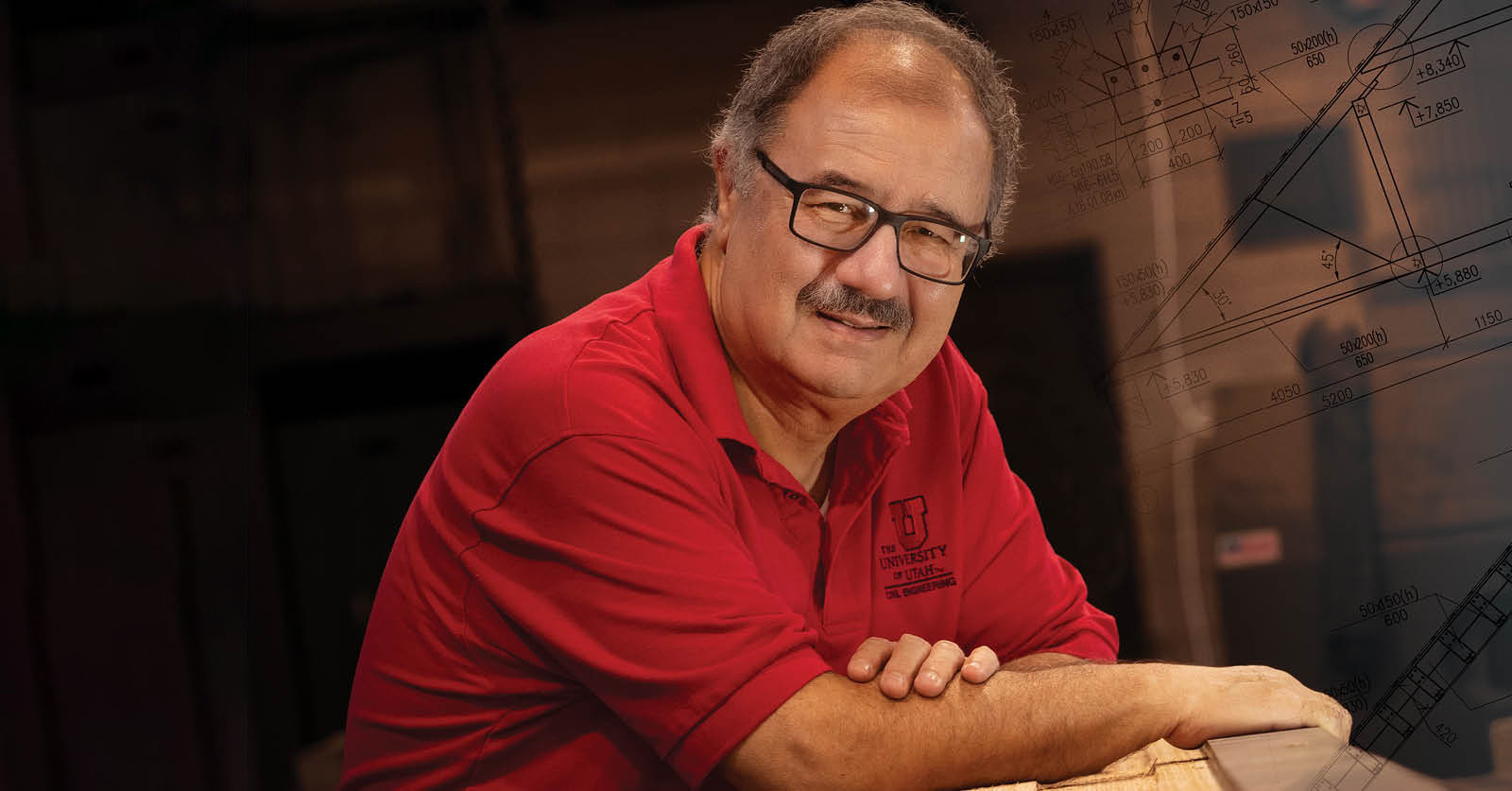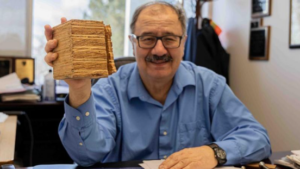Earthquake-proofing Mass Timber Buildings
Civil & Environmental Engineering (CvEEN) professor Dr. Chris Pantelides‘s research is revolutionizing wood construction.
Sitting in his office in the Meldrum Civil Engineering Building, Dr. Pantelides holds up a block of composite wood, about 12 inches long and 10 inches wide, and smiles.
“What you’re looking at here is the future,” he says.
The deceptively simple piece of lumber is an example of “mass timber” technology, a category of “engineered wood product” set to revolutionize the construction industry. Pantelides has spent the last seven years developing it.
On the desk before him, amongst other pieces of wood and long metal dowels, sits his latest research paper, titled “Design and Cyclic Experiments of a Mass Timber Frame with a Timber Buckling Restrained Brace.”
The paper, authored by Pantelides, his grad student Emily Williamson, and industry researchers Hans-Erik Blomgren of Timberland, and Douglas Rammer of Forest Products Laboratory, was recently published in the Journal of Structural Engineering. It explores the best ways to build a Buckling Restrained Brace — a type of building support that protects against earthquake damage — with mass timber.
As a construction technique, mass timber is defined by its use of columns, beams, and boards made not of a single piece of wood, but of multiple wood layers or pieces tightly bound together. Mass timber wood products, as well as their production process, have a number of advantages, environmental and structural, over the usual building materials.
“The timber that we’re talking about, it’s very strong. It can take the place of steel or concrete in many building frames, but it’s much lighter,” Pantelides explains. “A mass timber building is one quarter the weight of a concrete building too, requiring a much smaller foundation.”
Thanks to its super-compressed makeup, mass timber is effectively fireproof as well, resistant to moisture damage, and highly durable.
On top of that, with today’s sustainable forestry techniques, using wood is more sustainable and “renewable” than ever.
“It takes only seven seconds for European forests to grow enough timber required for a three bedroom apartment,” Pantelides explains.
Whereas concrete and steel production is highly carbon intensive, every ton of timber grown sequesters 1.8 tonnes of carbon dioxide from the atmosphere. A mass timber building could be 25% faster to build compared to a concrete building, which significantly lowers construction emissions and costs.
Yet despite all this, steel is still the go to for tall buildings, especially in areas with high risk of earthquakes or hurricanes; steel’s ability to bend and not break under pressure is key. Maintaining a building’s structural integrity relies on a deep understanding of such properties — an understanding we don’t have with the generally stiffer mass timber. This is where Pantelides’ research comes in.
With its varied compositions, mass timber is far from one-size fits all; the type of wood used, the size and shape of the wood particles, how they’re stuck together, or even whether individual layers are stacked parallel or perpendicular to each other will greatly influence how the finished product reacts under stress.
Since he first started investigating mass timber, Pantelides has been troubleshooting and experimenting with different “recipes,” eventually arriving at one that calls for shaving dark fir wood into chips, tightly compressing the chips together into planks or boards, and then laminating those layers together with ultra-strong glue. The resulting plywood can then be securely fastened to other pieces of wood with joints made of steel dowels and plates.
Using this formula, Pantelides and his team began to experiment with mass timber versions of earthquake-resistant architectural elements, including the Timber Buckling Restrained Brace (T-BRB) — the focus of Pantelides’ most recent publication.
He and his grad student Emily Williamson developed several different configurations of this brace in CvEEN’s structural engineering lab, using an actuator that applied horizontal forces equivalent to a magnitude 7.0 earthquake, for nine tests in total. Sensors recorded how different elements warped or shifted as the tests progressed, allowing the team to hone in on an ideal design.
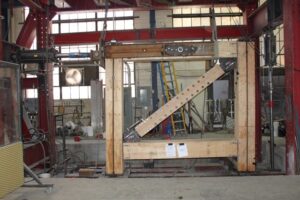
A T-BRB/ Mass Timber Frame configuration sits within the metal actuator, where it will be exposed to shaking equivalent to a magnitude 7 earthquake.
The results of Pantelides’ research will be invaluable in accelerating the use of mass timber construction, allowing it to become tougher and taller.
Mass timber is expected to proliferate in even earthquake- and hurricane-prone areas, responding to the increased demand for more sustainable construction materials. The most recent version of the International Building Code, the central set of building regulations in the US, included a construction type that allows the use of mass timber in buildings up to 18 stories. A 25-story-tall hybrid mass timber and concrete building, the new world record, was just built in Wisconsin.
“I think in the next 20 years, there won’t be many buildings less than 12 stories or maybe even 18 stories built with steel and concrete. It just won’t be feasible anymore. In the near future we will even see skyscrapers, over 50 stories tall, that are built using mass timber.”
More news from our department:
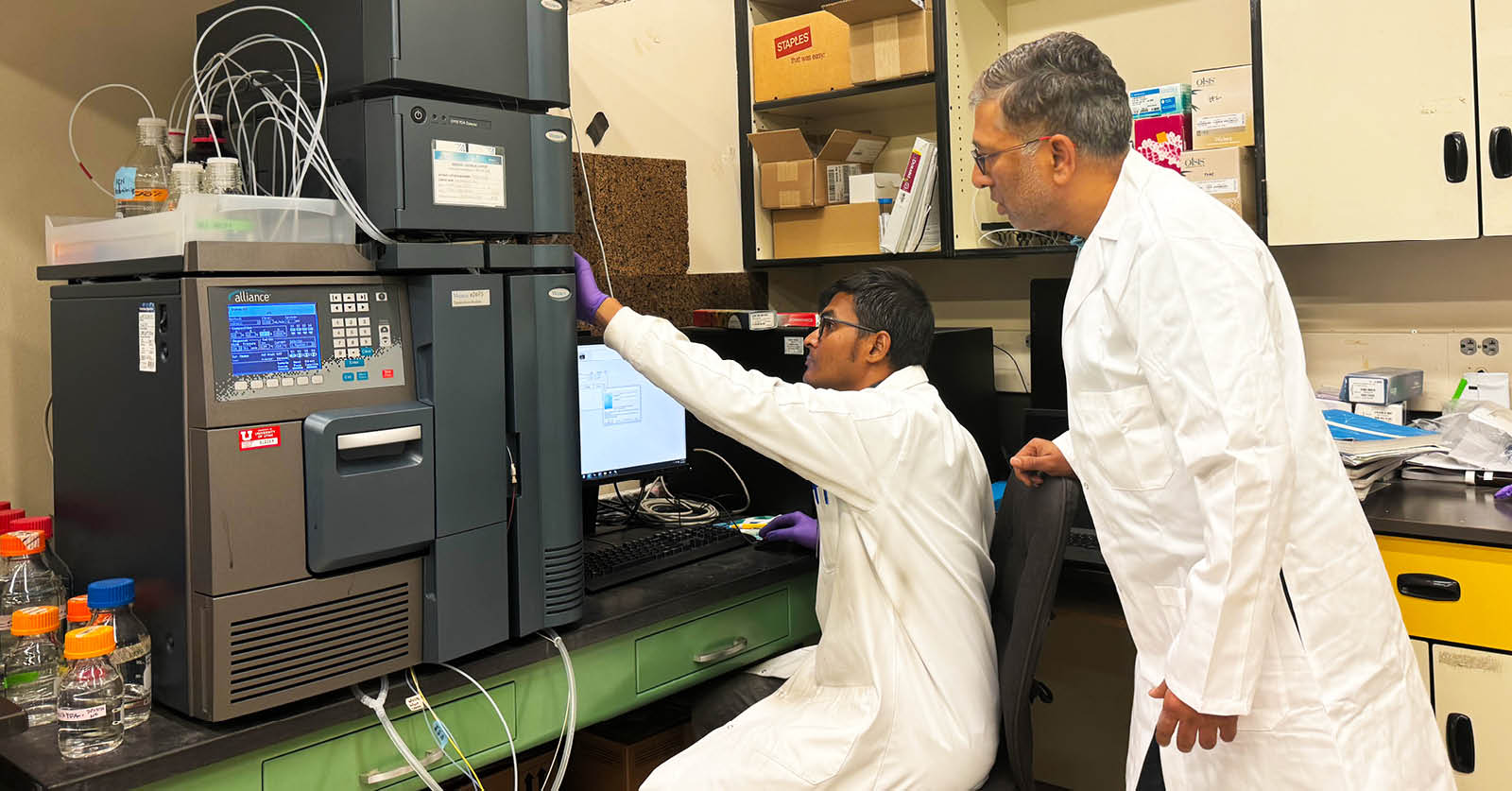
Fighting Forever Chemicals
Dr. Ramesh Goel Leads $1.6M EPA Research on PFAS Known as “forever chemicals,” per- and polyfluoroalkyl substances (PFAS) are a group of synthetic chemicals that have been widely used in various industrial and consumer products, such as non-stick cookware, water-repellent clothing, and firefighting foams. Their resistance to degradation combined with their potential to accumulate in […]
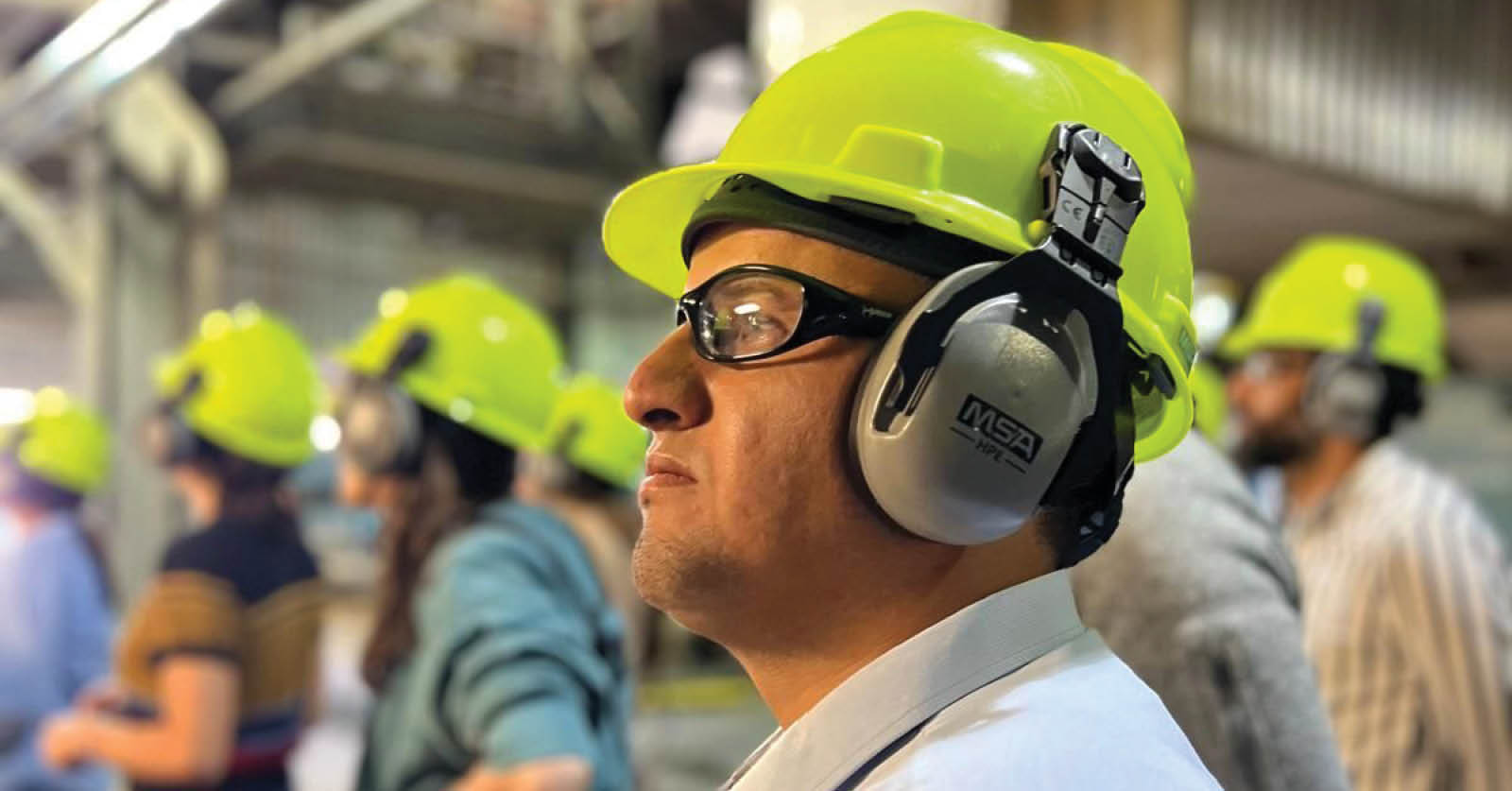
PhD Student Omar Bakelli Completes RECS 2024 Program
Bakelli’s Participation Propels Him into the Forefront of Carbon Sequestration Research University of Utah PhD student Omar Bakelli recently participated in the 20th annual Research Experience in Carbon Sequestration (RECS) program, held from July 21-30, 2024, across Colorado and Wyoming. Sponsored by the U.S. Department of Energy (DOE), RECS 2024 provided an immersive experience for […]
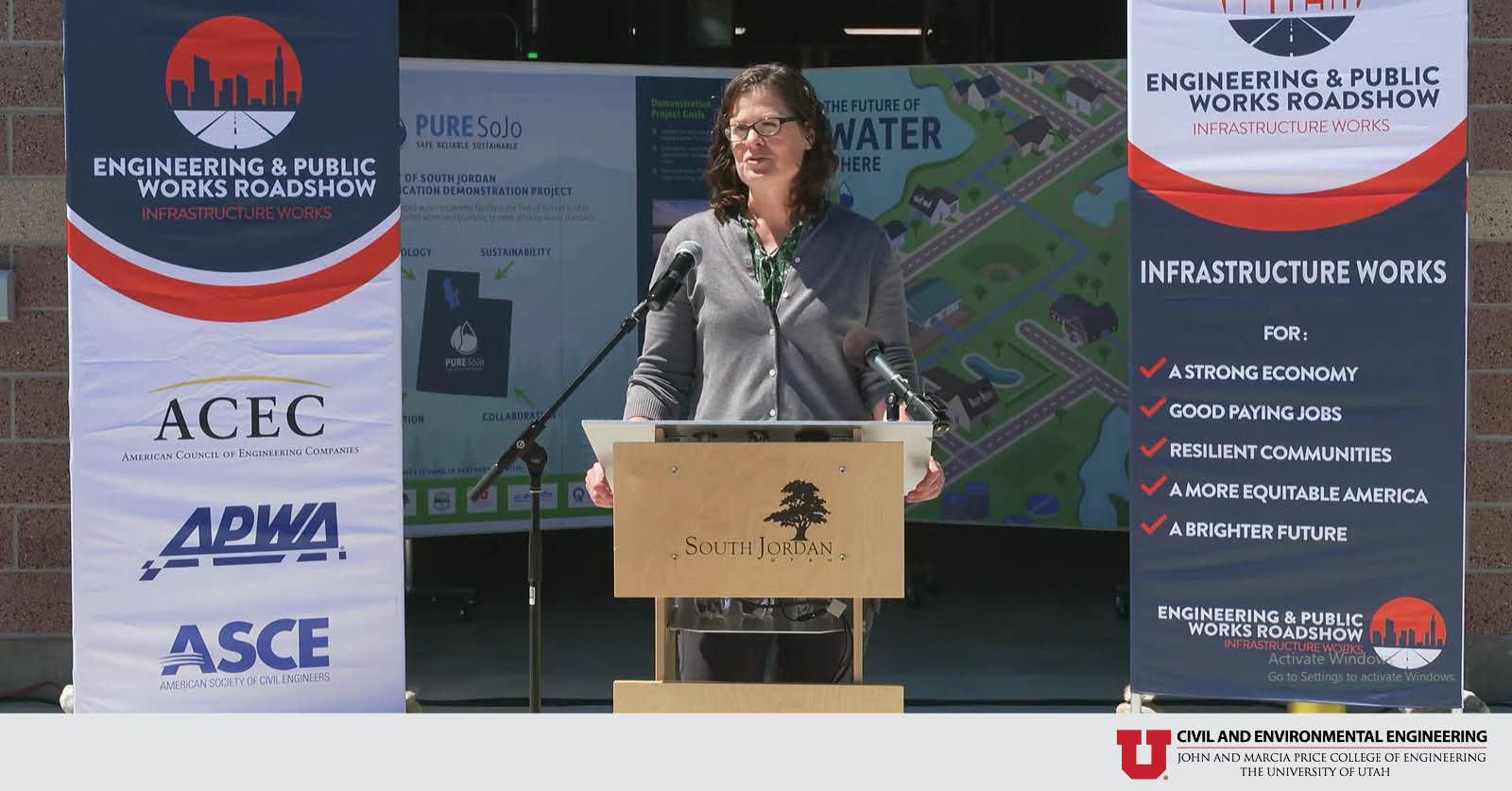
From Classroom Concepts to Real-World Impact
Dr. Weidhaas Champions Local Solutions for Water Reclamation in Arid Utah On June 18, 2024, Environmental Engineering Professor Dr. Jennifer Weidhaas shared her insights and experiences with the groundbreaking PureSojo project as part of the Engineering & Public Works Roadshow. This innovative initiative, developed in collaboration with the City of South Jordan, represents a significant leap […]
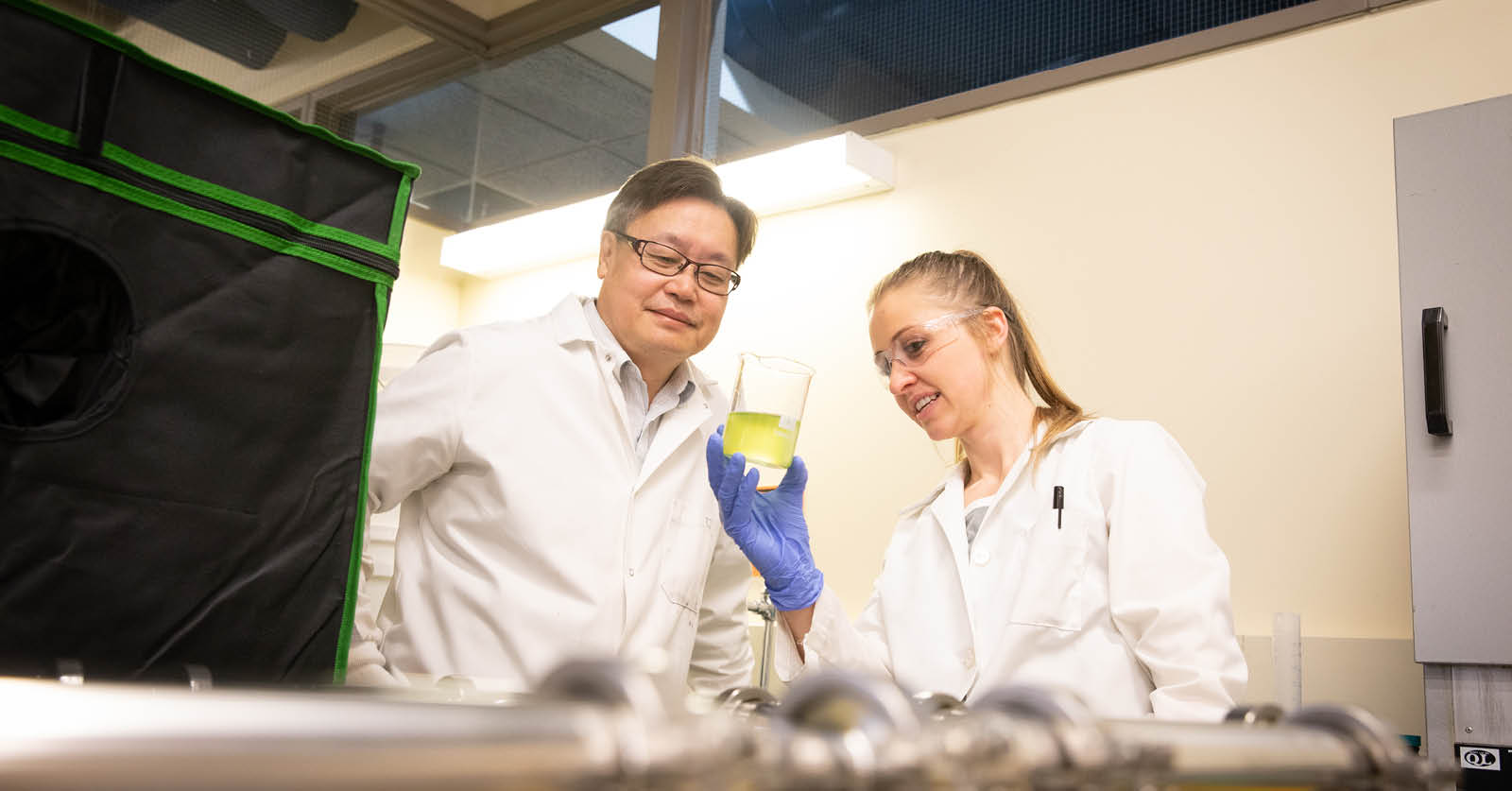
Nanobubbles: Tiny Powerhouses with Huge Potential
University of Utah Environmental Engineering Professor is at the Forefront of New Nanobubble Technology Peculiarly powerful, nanobubbles have opened a new frontier in science and engineering, creating promising environmental and medical applications. But what exactly is a nanobubble? Imagine a tiny water bubble that’s 2,500 times smaller than a single grain of salt. Then imagine […]

